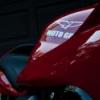-
Posts
1,613 -
Joined
-
Last visited
-
Days Won
2
Content Type
Profiles
Forums
Events
Gallery
Community Map
Everything posted by Dan M
-
DITTO
-
Great looking bike, Dan. That Magni fairing is perfect with the lines of the bike.
-
It is far more work to convert than to sort out your FI. Then, once you convert you have to sort out the carbs. Makes no sense to me.
-
It is the orientation of the crankshaft. Across the frame: transverse. Along the frame: Longitudinal. The cylinder layout is described as "in line" or "V" or "opposed" or even sometimes "radial" or "square" So our beloved Gooses are longitudinal Vs. And please, no more bu, er, cush.
-
Along these lines, what about the rear rotor? I was able to find much broader coverage on fronts once I knew it was the same fitment as a few Ducatis. Anyone know if there is a direct crossover for the rear?
-
You're abslutely right Pete. I just found it amusing. I'll stop now. We can move on to the pros & cons of waxing the underside of fenders to reduce drag & heat caused by the turbulent airflow created by modern directional tread patterns.
-
No intention of confusing Dave. Actually, Luftkammer translates as an "air chamber" & Driveline slack is caused by clearance or a gap between meshing components. Further, there is no intention of causing confusion to our UK brothers, who are always told to "mind the gap"
-
Dave is confusing slack / free play (an air gap) and cushion (a rubber or mechanical spring, regardlesss of how soft) Making it softer doesn't increase slack it just...makes it softer. Is this the right place for an argument? I just told you. No you didn't. Yes I did. No you didn't. Yes I did.
-
I too am a professional wrench. After decades of doing this sort of thing here in the rust belt, removing stubborn fasteners has become second nature. As with many soft OE fasteners, once you go through the trouble of removing them and replacing them, a little care on installation & a dab of anti-sieze will keep them servicable for years without the anguish. With me, unless it is the dead of winter and I don't have much to do, I prefer to get the bike back on the road ASAP. While I like to tinker with my bikes, I'd rather be riding them. BTW, I never said risky. I'm just for keeping things simple and reliable. From my experience, those two terms are usually synonymous This condition is easly cured with a revolver.
-
That's it in a nutshell. Why does a small problem with a clear solution need to be turned into some major project? Makes me crazy. Life is too short to make easy jobs harder.
-
I think you have it right. Seems those lines are applied after inspection indicating critical bolts have been checked. I suppose one could watch them for indication of movement, but as this thread indicates, if properly tightened and loctighted, loosening is not something these bolts do. I've been in the habit of cleaning that ugly yellow paint off of my fasteners.
-
-
I'd say blue is fine. I've never had such things loosen before factories started using loctite on them. Seems the risk managers are mandating thread locker on all these brake parts in this litigious society. (Of course someone here will write about their friend's rotor instantly coming loose at speed with no prior warning causing a horrific crash)
-
Maybe this can be done. I'm picturing a rider in full gear, rear shock out of the bike grasped in two hands like a center about to snap a football, then whilst supporting the front of his body this way, balance each knee on a fork spring. Get a close friend to make measurements.
-
If they are not too bad - even if the allen turned partially in the hole, hitting them squarely with a hammer will close up the hole some. Once the hole is shrunk (don't over do it) you'll have to pound your allen socket back in. The fit should be good enough to remove the bolt but be sure you heat it enough to loosen the thread locker or you will just round it out again. If it is rounded beyond using that approach, then there are two more things to try. Cutting a slot with a hacksaw or panel cutter then using an impact driver with a large screw driver bit. If all else fails, drill with a slightly larger drill bit (21/64") just until the head of the bolt comes off. You'll leave a few threads showing to grab with a visegrip after the rotor is out of the way. Again no matter how you do it, heat it enough to soften the locktite or things will just get worse. MAPP gas seems too hot for the wheel or rotor carrier finish. I don't know what temp my heat gun gets to but I'm thinking is isn't more than 2000F. You'll do much less damage with lower heat and more time to loosen this stuff. Again, Greg does it without incident, just don't over do it. Mapp won't hurt the metal, I'd just hate for you to blister the finish.
-
I was afraid of hurting the wheel finish with a torch but evidently Greg does it without incident. I used a heat gun aimed at the bolt head for about a minute and a half and they unscrewed easily. The key is applying the heat for a long enough period of time to soften the thread locker. The wheel acts like a heat sink so be patient.
-
I agree wholeheartedly. Over the years I've always favored Metzelers, even back in the bias ply days. Always switching to them from the factory Bridgestones or Dunlops. Perhaps there is some deep seated prejudice there. In all fairness, after dissin' the Bridgestones that were on my LeMans when I got it; I'll have to add that I bought the bike 3 years old with 900 miles on the clock. It is quite likely they were much harder than new so traction suffered.
-
Greg makes probably the most important point here on riding technique for this bike. Getting your weight off of your arms, yet still forward on the bike makes worlds of difference. Tires are truly personal choice. Someone above edited a quote to elude that Metzelers break away quickly. I've had great results with Metzeler Z6s and Pirelli Stradas, very predictable, quite the opposite with the factory Bridgestones.
-
Aye Nige, Rossopuro sells some kits. (look up, they're a sponsor) I saw one here: http://rmcube.abd.it/RMcube/servlet/contro...deObject=FR1001
-
Beautiful featherbed Bob!
-
OK, here's the story. It's about 85 here today. My bike runs too rich at idle especially when the weather is hot. I have not tested the temp sensor yet. With the regulator open to the atmosphere CO % @ idle was 5.7% (like I said, rich at idle) With 15" of vacuum applied, CO % drops to 3.96% (more like it although I'd like to see 3.0) So if nothing else, 1&3/4% less CO should convert using less fuel. Obviously it will only change things during closed throttle operation so the real world savings may be very small. I do have one reservation about running manifold vacuum to it. On cars that control pressure in this manner, we often see these regulators leaking. The diaphram flexes every time the throttle is opened, and eventually tears. I'd hate to recommend this mod and have the long term effect be a leaky regulator that no one keeps in stock.
-
I just did 1200 miles mostly unpaved in Alaska. My buddy and I were on KLRs. There were a couple other KLRs, 2 KTMs , 2 1200GSs, 2 650GSs & a 650Dakar. For the most challenging stuff the 650s were the way to go, be it KLR or GS. The 1200s were just too big & heavy. The two KTMs both had mechanical issues. One broke off the side stand twice & overheated repeatedly and the other had leaky fork seaks, getting fork oil on the front brakes. They seemed competent bikes otherwise though. That HP is really cool and there probably isn't a better bike for unpaved roads. When the going is muddy and rutted the unbreakable KLR is a good choice and still has decent street manners. All depends on how you are going to use it.
-
I like it, fairing looks a little Yamaha like though, not a bad thing just not original. Now if only MG would buy the Rotax motor and mount it transversely to create the new V-1125
-
Next time I have my bike at work (maybe tomorrow) I'll hook it up to the 4 gas and see if there is less CO output with vacuum applied. My bike always seems too fat at idle even after setting mix & balancing Tbodys. I'll report what I find.
-
It is a regulator and yes, it will turn. Only the friction of the o-ring is keeping it from turning. Don't make a habit of turning it though because you may cut the o-ring seal. Usually some muck from old gas will harden inbetween the o-ring and the housing causing it to leak. The best thing is clean it and just get a new o-ring. Sealant has a way getting where it shouldn't, like your injectors. edit: Does any model year have manifold vacuum running to the port? It's function is to reduce pressure when not under load (closed throttle) - most reduce it by about 5 psi. Mine is just open to the atmosphere, but it would make more sense to connect it to vacuum. Anyone have a hose on theirs?



